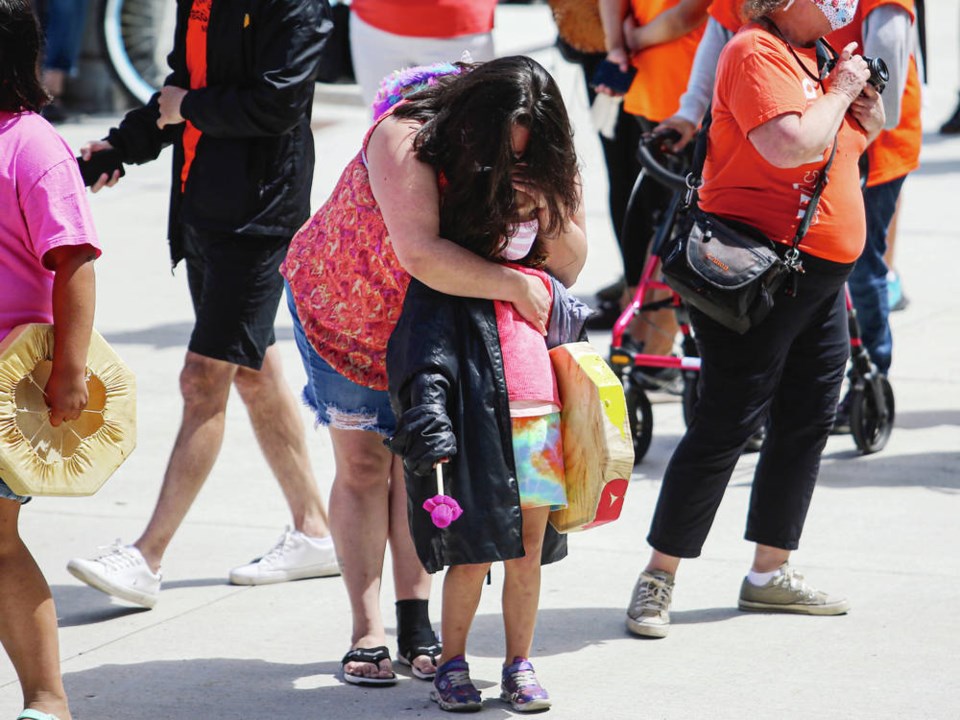I called her “Sister Ogre.” I never said the name out loud, of course — not to her or to anyone else.
For some reason, my parents sent me to a Catholic elementary school. It was in a new suburban neighbourhood of a small Alberta city. Other than periodic appearances by the local priest and weekly religion lessons, the experience seemed similar to that of my best friend who lived six doors down and attended the nearby non-denominational school.
Sometime in the late-1970s, two nuns started teaching at my school.
Sister Teresa was mild, kind and redheaded. (Anne of Green Gables was my favourite book that year, so her hair colour made an impression.) You could tell she loved teaching.
Then Sister Ogre arrived.
We were told she was “special.” She had taught at a school for “native children” somewhere or other in northern Saskatchewan for many years before coming to our school.
These days, we know exactly what that means, and none of it is good.
The Truth and Reconciliation Commission brought to light almost a century of abuse of Indigenous kids by teachers and staff at the 139 residential schools that once operated across Canada. The recent discovery of the remains of 215 children buried on the grounds of a former residential school in Kamloops has confirmed that the stories passed down among families and shared during the commission’s hearings and the trauma experienced by residential school students and their families are based on experiences.
But in the 1970s, the words meant something else — something special and worthy of reverence, according to the principal and teachers at my school.
To 10-year-old me, they meant nothing.
All I knew was that Sister Ogre was mean.
She used fear to keep us kids in line. I nicknamed her shortly after she arrived at our school when she suddenly cracked the edge of a wooden ruler across the knuckles of a kid four desks away, then grinned at him. She also had a way of grinding her knuckles hard into a kid’s shoulder or their skull or pinching and twisting their ears.
She made kids cry.
Luckily for me, she wasn’t my homeroom teacher. My class had her for only about three hours a week, for French and religion.
That said, my friends who were in her homeroom class insisted that she was “super nice.… SO nice!” She certainly was sweet to the principal, the priest and to parents.
And I still didn’t understand why working in northern Saskatchewan made a teacher special.
I asked my homeroom teacher. Somehow, despite my young age, I sensed delicacy was required. I hung back when recess began one morning so that I could talk to my teacher alone. I chose my words carefully.
My teacher, who was kind and motherly, explained that Sister had worked in a community far away in northern Saskatchewan to teach little Indian children. (Sorry! Those are the words she used.)
I still didn’t get it.
“She had to leave her home, her mom, dad, brothers and sisters and all her friends for years and years, just so those little children could learn to read and write. Wasn’t that good of her?”
“Good” is not how I would have described Sister Ogre.
I think I responded with something banal about how difficult it must have been for Sister to leave her family and home like that.
But I remember that while I was mumbling an answer, all I felt was a great sweeping sense of horror: Those poor kids, having to put up with Sister Ogre like that!
My classmates and I had to deal with Sister Ogre for three hours a week, with weekends and holidays off, and only while we attended that school. That was nothing to what her former pupils had had to put up with.
But what do I know? Maybe she was as sweet to them as she apparently was to her homeroom pupils at my school.
Then again, maybe she wasn’t.
We now know that many thousands of kids in residential schools had to deal with ogres and other cruel and terrifying human monsters every day for 24 hours a day, year after year after year.
keiran_monique@rocketmail.com



